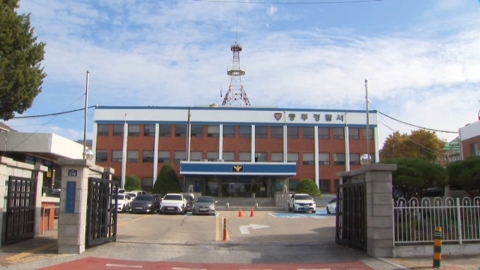■ Starring: Lee Young-joo, professor of the Department of Fire and Disaster Prevention at Kyungil University
* The text below may differ from the actual broadcast content, so please check the broadcast for more accurate information. Please specify [YTN News START] when quoting.
[Anchor]
The November snowstorm for the first time in 117 years didn't stop overnight. Yesterday evening, there was a 53-car crash in Gangwon-do, and a snow removal vehicle slipped downhill and hit a telephone pole. Facilities that could not overcome the weight of the snow collapsed due to humid snow, causing a series of casualties in places. It snowed a lot overnight and will continue to this day. You should pay special attention to the accident. For more information, let's talk with Lee Young-joo, a professor of fire and disaster prevention at Kyungil University. Welcome, professor. There were a lot of accidents everywhere yesterday, and the biggest accident was the 53-car crash in Wonju, Gangwon-do. Let's talk about this part first. First of all, the cause is black ice, so in a nutshell, the road was completely icy, right?
[Lee Young-joo]
That's right. It seems to have been at the time when the sun was setting this evening. The accident occurred at 5:49 p.m. As the sun goes down, the temperature drops sharply, snow on the road surface during the day, and then the temperature rises, so some of it must have melted. These things are frozen as the temperature drops again, so the black ice condition you mentioned. In short, it is presumed that the road is coated with ice. That's why the accident happened as we slipped on these things, and it seems that the subsequent vehicles probably had a series of accidents. But fortunately, it's a 53-car crash.There were no fatalities. I think it was a relief because about seven people were injured.
[Anchor]
It's not easy to check with the naked eye, so I think you need to be more careful. There was also an accident like this at night. There was an accident in which a snowplow slipped on a downhill road and hit a utility pole, but because it's slippery on the road like this, cars have no choice but to slow down and slow down, right? In this case?
[Lee Young-joo]
Basically, it's the same with the accident of slipping when it snows, and the 53-car crash in front of it. That's why the drivers have to be different from usual. As you said, I drive carefully, but if you ask me what to do, you have to slow down by more than 1/2 than usual. In addition, securing a safe distance can be safe only when you secure it at least two to three times more than usual. In fact, in the case of icy roads or snow, the braking distance itself becomes very long. So in the case of buses and trucks, the braking distance is up to 7 times longer. In addition, passenger cars are more than four times longer, so it is essential to secure a sufficient safe distance and slow down to prepare for such things. Also, if you do sudden stops or sudden acceleration while driving, it is difficult for follow-up vehicles or things like this to respond, so you should pay attention to these parts because it can lead to accidents. I can't help it while driving.When it snows a lot and gets cold like this, basically snow tires, chains, and antifreeze should be switched to winter to secure visibility, so you need to prepare for this winter.
[Anchor]
There are various products called spray chains these days. I think it would be good to take care of that, too. In fact, you shouldn't have a slip accident or a snow accident.Ma can you point me out this part of what to do if I've been killed, what to do with it, how to file a rescue report, where and how to wait?
[Lee Young-joo]
Traffic accidents on rainy roads and snow accidents that slip on snow do not end up as just a primary accident, but a situation where follow-up vehicles continue to come and lead to a series of crashes, so the secondary damage can be much greater. Therefore, when other accidents actually occur, it is most important to get out of the vehicle quickly and report them to a safe place, a shoulder, or something like that. Even more importantly, places such as slip accidents and snow need to be dealt with faster. So, even if you leave the vehicle alone, you don't have to report it first for your own safety. First of all, it's most important to move to a safe place. Another thing is that the roads are slippery, so you can slip and get injured or have another accident while traveling, so it is important to keep in mind about slipping and other things as much as possible when you move. And when you report it, you can report it to 119.On dry roads and highways, you have to check the location accurately to be able to move quickly. But on the road, it's hard to accurately explain the point and things like that. So it is also important to report the surrounding terrain or the direction you are proceeding to, for example, from Seoul to Busan or from Busan to Seoul, so it is important to report it as well as accurately as possible.
[Anchor] If you look at the signs on the
highway or national road, there are numbers and things like that, so it would be good to refer to those things as well. You pointed out the precautions for snow accidents, but if you have a CCTV screen ready, it would be good to display it. If you look at the road now, you can still see snow on the side of the road, although snow removal has been done. There are places where snow is still strong, and a lot of snow is predicted in the future. Please point out the importance of snow removal.
[Lee Young-joo]
Basically, in the case of snow removal work, calcium chloride or other snow removal agents are sprayed in advance just before it snows, so it melts quickly and disappears naturally, preventing snow and slipping. On the other hand, when snow accumulates, there are parts that quickly remove these snow so that it does not interfere with walking or vehicle traffic. However, in the case of spraying snow removal agents, it was also difficult to actively spray snow removal agents in advance because it continued to rain just before it snowed. On the other hand, it's the same for yesterday and this morning.In a situation where it snows a lot, even if you spray a lot of snow removal agents, the snow removal effect will inevitably be reduced. So, with these various situations combined, it may have felt that snow removal was a little lacking from the perspective of the general public and citizens.
[Anchor]
Also, snow removal work is relatively well done on large roads and roadside depending on the region, but isn't it difficult to remove snow in alleys or unpaved roads?
[Lee Young-joo]
That's right. Anyway, if you do snow removal, these snow removal works using snow removal vehicles will be the main thing, but snow removal vehicles themselves are somewhat different in size, so it's quite difficult to remove snow on side streets and alleys. This is also because snow removal is prioritized around main roads with the highest vehicle flow. In fact, most of the difficult things are very difficult in the process of coming out from home through alleys to the main road. So when you get out of the house, it is important to check the alleyways around the house or the back roads before leaving.
[Anchor]
In the case of alleys where snow removal vehicles are difficult to enter, I think that falling accidents will be prevented only when residents sweep in front of my house on their own. It would be nice to use public transportation as much as possible in a situation where there is a lot of snow on the road, but what should I be careful about when driving when I have to use a vehicle? You mentioned the safety distance earlier, but I think there will be some differences in detail.
[Lee Young-joo]
That's right. You have to do the basic things related to safe driving, such as deceleration and securing a safe distance. As explained earlier, there is a section controlled by snow on the way to and from work, or a section where snow removal is not done properly, or a steep section on the road you always go to. If this is the case, it is better not to drive a vehicle, and if you have to drive a vehicle, it is more important to check the routes that can be bypassed before leaving. On the other hand, even if you keep safe driving when driving, you have to pay much more attention to the front than usual. You should always be prepared for slipping or accidents in other vehicles. Also, the road surface itself is hard to see in the case of the black ice mentioned earlier. Therefore, you have to drive while looking at the frozen state of the road more accurately, so it is necessary to pay more attention to the front more actively than other times.
[Anchor]
When you drive, there are places where snow accumulates and places where snow does not accumulate. But it's hard to distinguish lanes. Looking at it, I think I have some options, whether I should draw lanes virtually randomly and go through the snow or just go the way the asphalt car went, how do I drive?
[Lee Young-joo]
If possible, in any case, places where a lot of vehicles travel and melt and some less snow can be relatively safe. Even if it's on snow, there are snow glides, and snow accumulates, causing uniformity of the road surface, that is, uneven irregularities, which can interfere with safe driving. As I came here today, there were places where traffic lights and signs were hidden from my eyes, so I couldn't see them well. So you should drive safely while looking at these parts more carefully than usual.
[Anchor]
And aren't there people who drive private vehicles on icy roads, as well as people who walk around to use public transportation? I don't know if this question is appropriate, is it safe to walk often when you're walking? Or is it safe to walk wide in a bigger stride?
[Lee Young-joo]
If possible, it is better to take a smaller stride than usual, or a little smaller, although not often. Because it is difficult for you to lose your balance or cope with slipping when you walk wide, so it is better to walk with less stride than usual. Also, on days like this, it would be much safer to wear sneakers and hiking boots than shoes with a lot of slipping, such as shoes or slippers.
[Anchor]
I see. And we're reporting on the characteristics of this snow, but it's called a habitual snowstorm. It's very humid snow, so even if it's the same volume, it's very heavy. How heavy is it?
[Lee Young-joo]
Most of the snow in our country is a habit. In the case of snow this time, it is a practice that weighs a lot more because the snow fell while staying in more moisture. It is known that it generally weighs up to three times more than construction, that is, less humid snow. So, for example, as it appears on the screen, it is said that if snow actually accumulates about 50cm in a place of about 10m, 10m, and 30 pyeong, it takes about 130 tons of weight.
[Anchor]
Of course, the greenhouse is bound to collapse. I see. Yesterday, I know that not only snow accidents but also collapse accidents were reported a lot, but not only structures but also trees and utility poles collapsed, causing accidents. When I think about it at first glance, I think it's okay because the area to support the weight is narrow. But I guess it's not?
[Lee Young-joo]
This is because the small area where snow can accumulate itself takes less weight for snow, but there are many cases where these are not installed in consideration of these structural loads. Therefore, even wires can fall off or break due to snow accumulation, so even if it is small, it does not mean that there are no parts such as fear of collapse. So you should pay close attention to these parts as well. In fact, in the case of buildings, the snow load, that is, the snow load, is considered in the design and construction process. However, the problem is that even buildings like this can lead to collapse, such as old buildings that are aging and structurally vulnerable, and temporary buildings such as greenhouses, in this case, structural burdens, if these are not fully considered.
[Anchor]
Then, should we check the facilities where snow accumulates? Signboards, or canopy, or tents?
[Lee Young-joo]
That's right. It can be more vulnerable when snow accumulates on vehicles that have been installed arbitrarily. So you should look closely at most places where snow can accumulate. On the other hand, the snow melts and may be structurally more dangerous as it enters cracks, so you should also look at the accumulated snow, but it is also necessary to check the cracks in the building.
[Anchor]
What else should I be careful about in the process of removing the wet tongue?
[Lee Young-joo]
Many people go up directly to the roof to grow their eyes, but you should never go up like this and remove the snow. Do not go directly to the roof because there is a load on the snow, and if workers go up, it can lead to collapse or slip and get injured while removing snow from the roof. And don't go too high or go up to the roof. If snow can be removed from the side of the building, preferably, it would be right to remove snow within the permitted range to work safely.
[Anchor]
Breaking news about the heavy snow is coming in. What we just came in is that some trains on the Suinbundang Line have been delayed due to heavy snow in the Seoul metropolitan area and are temporarily stopping operation. Public transportation seems to be getting a lot of disruptions like this. We'll let you know when we get the detailed news. And since it snows a lot in Seoul and the metropolitan area, I think there will be some people hiking to see the beautiful scenery and snowscape. I think you need to be very careful.
[Lee Young-joo]
That's right. If it snows a lot, even if it's a common hiking trail or mountain, there are a lot of risks. The first is that the road itself is very slippery, and in the case of mountains, it is even more dangerous because there is no separate snow removal or such things. Also, in a situation where there are a lot of fallen leaves piled up like recently, the accident of slipping when you step on it when snow accumulates, so it is better not to hike as much as possible because there is a high risk of injury. If you're going to the mountain, it's better to see it without climbing from a distance rather than these risk factors. However, the problem is that if you find a beautiful view and follow it, you will be familiar with it, but it is different from the usual space because the snow is piled up. Because it might not be the way I came yesterday in a snow-covered situation. So please keep that in mind. Nevertheless, if you are isolated, you should report it quickly and ask for help. Even in this case, the coordinates called the national designation number are all written on the milestones at each branch, so it will be important to report those parts accurately.
[Anchor]
The first is safety, and the second is safety. And at the end, we even broke the news that there is a delay in some sections of the Suin Bundang Line train. I think it would be good for those who go to work to refer to it. Let's stop here. So far, I've been with Lee Young-joo, a professor of fire and disaster prevention at Kyungil University. Thank you very much.
※ 'Your report becomes news'
[Kakao Talk] YTN Search and Add Channel
[Phone] 02-398-8585
[Mail] social@ytn. co. kr
[Copyright holder (c) YTN Unauthorized reproduction, redistribution and use of AI data prohibited]
Weather
More- [News UP] 40cm on my way to work, big snow again...Will it stop in the afternoon?
- More than 40cm of heavy snow in the Seoul metropolitan area...Strong and heavy eyes.
- [Weather] For the second day in Seoul, "Snow Warning"...Keep an eye out for icy roads on your way to work.
- [Weather] For the second day in Seoul, "Snow Warning"...Keep an eye out for icy roads on your way to work.






![[Focus Y] Can the "Ignore" incident be seen as a "bully" case?](https://image.ytn.co.kr/general/jpg/2024/1127/202411271804218526_h.jpg)


